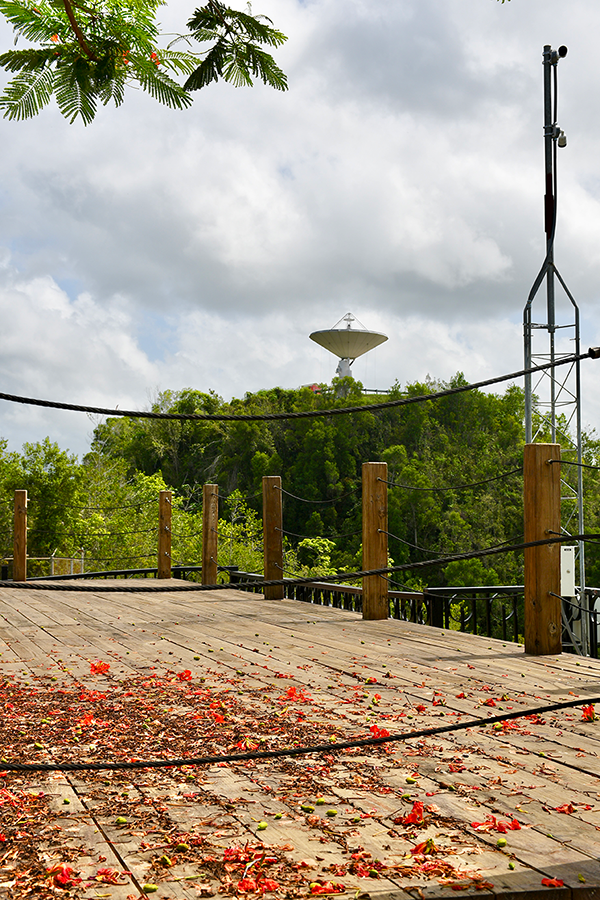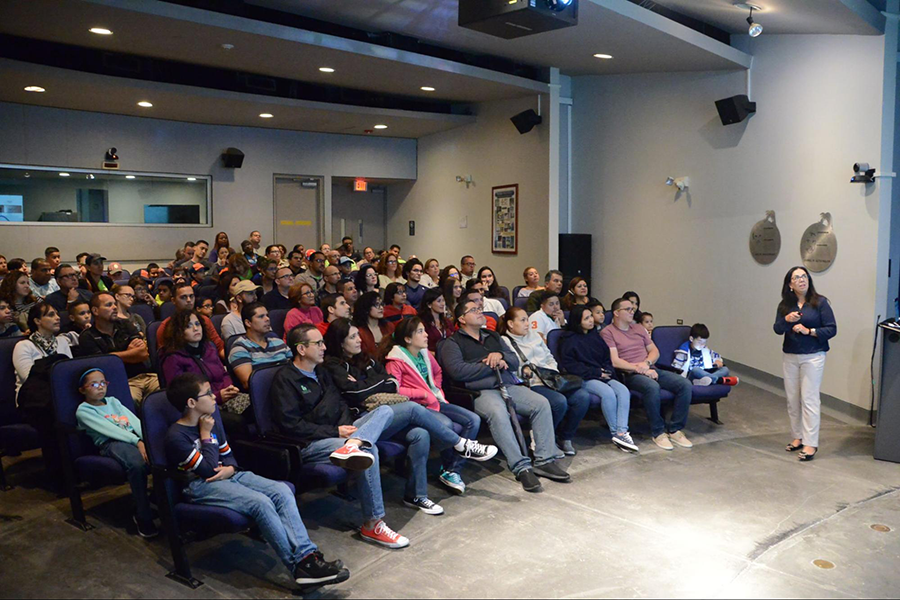Letter from Dr. Julie Brisset, Interim Director of the Florida Space Institute
Dear AO Users,
As we have now completed the closeout for the Arecibo Observatory, I would like to provide as much information to the AO community as possible.
We were instructed to place the majority of the instrumentation into a "long-term" storage configuration. NSF has stated that they will make some of these instruments, such as the 12-m telescope, available to the scientific community, but there is no timeline associated with that possibility yet.
Some of the former AO science programs will continue to operate, including the newly-named Caribbean Climate Open Research and Education (CCORE) program on the island of Culebra. You can read more about the current and future status of the AO programs here.
The rest of the observatory continued to execute excellent science up to the day we powered down the facility. We had an incredible solar science program through the operation of the 12-m telescope and the e-Callisto solar spectrometer, led by Dr. PK Manoharan, that continued to record major solar storm events until the day the instrument was turned off.
There was an incredible effort to install, test, commission and operate the new, wide-band cryogenic front end receiver for the 12-m telescope to dramatically improve the telescope’s capabilities for astronomical studies. Its first light was on June 1. This work could not have been accomplished without Anish Roshi, Phil Perillat, Felix Fernandez,, Bentege Perera, P.K. Manoharan, Luis Quintero, Arun Venkataraman, Sravani Vaddi, Allison Smith, Carlos Rios, Wilson Morales, Francisco Jimenez, and Osvaldo Colon. We are excited to share science results from the commissioning phase with the community in an upcoming publication.
The recent breakthrough scientific detection of low-frequency gravitational waves by the NANOGrav project was also made possible only recently through data collected at the Arecibo Observatory and contributions by AO scientist Dr. Bentege Perera.


The Planetary Radar group continued to publish new results from the large database of radar observations while also training the next generation of scientists; multiple new radar publications were led by graduate students. Additionally, there was excellent press coverage surrounding the recent analysis of the asteroid 3200 Phaethon, the target of the Japanese mission DESTINY+, led by AO scientist Dr. Sean Marshall.
Our Space and Atmospheric Science group continued to operate the LIDAR facility, commission CARLA lead by Dr. Jens Lautenbach, which was delivered to Culebra, and continued to publish new scientific results. We are very excited that parts of our team, led by Dr. Pedrina Terra, will continue to engage in critical atmospheric studies through the creation of CCORE.
One of the most important aspects of the Arecibo Observatory has always been its training and education programs. This year we hosted the final ENCANTO program for college students from Puerto Rico and Florida and the final semester of the STAR program, geared toward increasing college readiness for local high school students. We also hosted the final class of REU students at the Arecibo Observatory this summer; Arecibo was one of the first sites to host an NSF-funded Research Experience for Undergraduates (REU) program starting in 1987, though the observatory has hosted an internship program since 1972.

Despite the extremely difficult circumstances we have faced during the course of our management of the Arecibo Observatory, it has been a great honor being part of the AO community, receiving your support, and hearing the stories and memories built up over the past half century.
As our management of the Observatory comes to an end, I would like to thank all of the AO users for your contributions to the fields of science and education through the use of this incredible facility. I would also like to take this opportunity to acknowledge the incredible work of Tracy Becker, this year's receiver of the Carl Sagan Medal for Excellence in Public Communication in Planetary Science, in helping the AO to share its events and outcomes with the scientific community at large.
Finally, I am particularly grateful to all of the AO scientists, engineers, and staff who have tirelessly worked on behalf of the Arecibo Observatory in the face of many extreme challenges and uncertainties. Your passion has contributed to the inspiration and excitement of many, from students to senior scientists, from the general public to the most skillful specialists. You are truly the legacy of the Arecibo Observatory and, as our ways part in this world, I wish you all the very best on your future endeavors.

Sincerely,
Julie Brisset
Interim Director of Florida Space Institute
